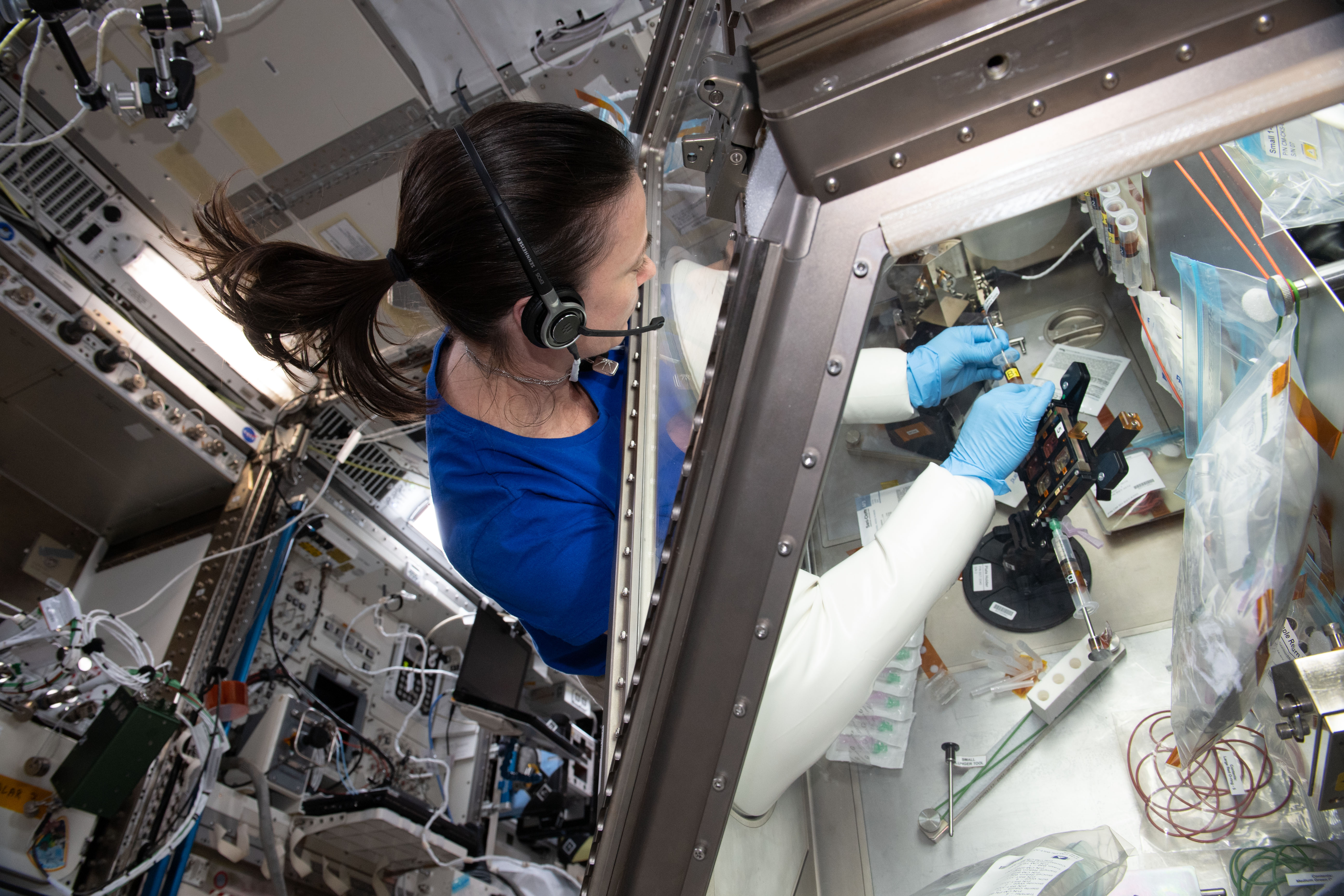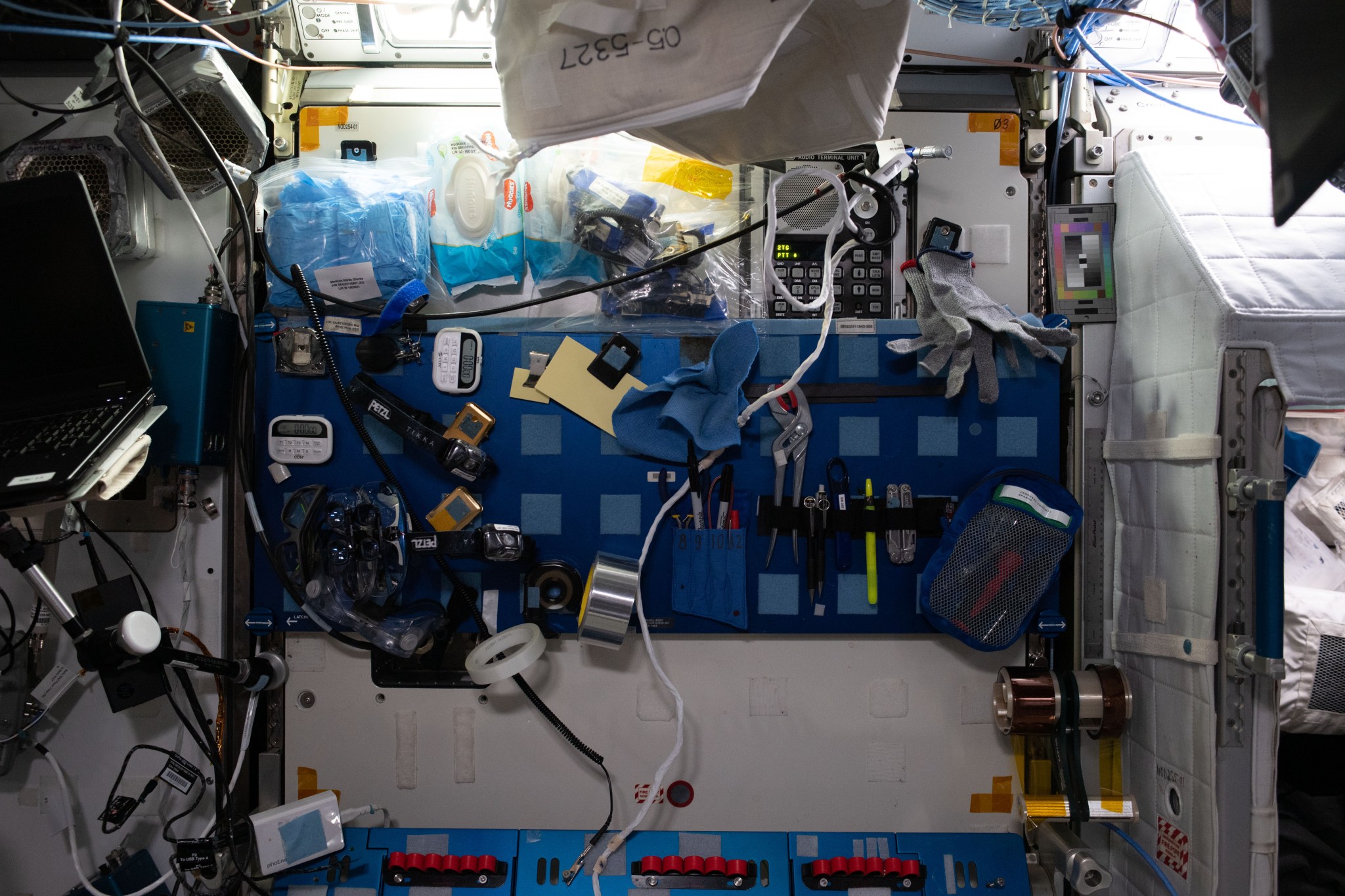Station Science Top News: August 16, 2024
Locations designed as a maintenance work area and an exercise area on the International Space Station are commonly used by crew members for stowage and body maintenance activities, respectively. These differences between intended and actual use demonstrate that systematic observation of material culture can help researchers identify how astronauts adapt to life in microgravity and support better […]

Locations designed as a maintenance work area and an exercise area on the International Space Station are commonly used by crew members for stowage and body maintenance activities, respectively. These differences between intended and actual use demonstrate that systematic observation of material culture can help researchers identify how astronauts adapt to life in microgravity and support better design of future spacecraft and habitats.
The first archaeological fieldwork in space, SQuARE examined the space station’s material culture – objects and built spaces and their symbolic and social meanings – and how these objects and spaces are used over time. Results suggest that more flexible definitions of use of spaces could improve crew autonomy and enable broader use of all areas by the entire crew. The researchers also found a significant number of adhesives and ties are used to keep objects from floating away, suggesting this is a critical adaptation crews must make in microgravity and that these gravity surrogates could be optimized for future space habitats.
Analysis of XMM-Newton, Chandra, and NICER (Neutron star Interior Composition Explorer) observations of seven thermally emitting isolated neutron stars (XINS) in the constellation Canis Major showed erratic spin behavior in one of them (RX J0720.4−3125). This behavior hints at complex surface heat distribution, a feature usually associated with a strongly magnetized atmospheric layer. The finding could lead to an improved understanding of the neutron star population in our galaxy and of neutron star evolution.
NICER makes high-precision measurements of X-ray astrophysics phenomena such as neutron stars, the ultra-dense matter created when massive stars explode as supernovas. XINSs likely represent a significant fraction of all neutron stars, but their origin and evolutionary history are uncertain. Researchers plan to use detailed modeling of the extensive NICER dataset to fully map temperature distribution on the surface of these stars, which could reveal the underlying physical processes responsible for their peculiar properties.
Researchers demonstrated the feasibility of using an engineered human tissue model to screen drugs for treating impaired muscle regeneration in astronauts and patients on Earth.
Muscle mass diminishes with age on Earth and astronauts experience similar but accelerated loss of muscle mass during spaceflight. Cardinal Muscle evaluated engineered human muscle cells cultured in microgravity as a model for studying muscle loss and treatment.
Researchers found that the model mimicked impaired muscle regeneration after just seven days in microgravity and that two drugs, insulin-like growth factor-1 (IGF-1) and a 15-hydroxyprostaglandin dehydrogenase inhibitor (15-PGDH-i), partially inhibited microgravity’s effects on the engineered tissue.
What's Your Reaction?



















.jpg?#)


































